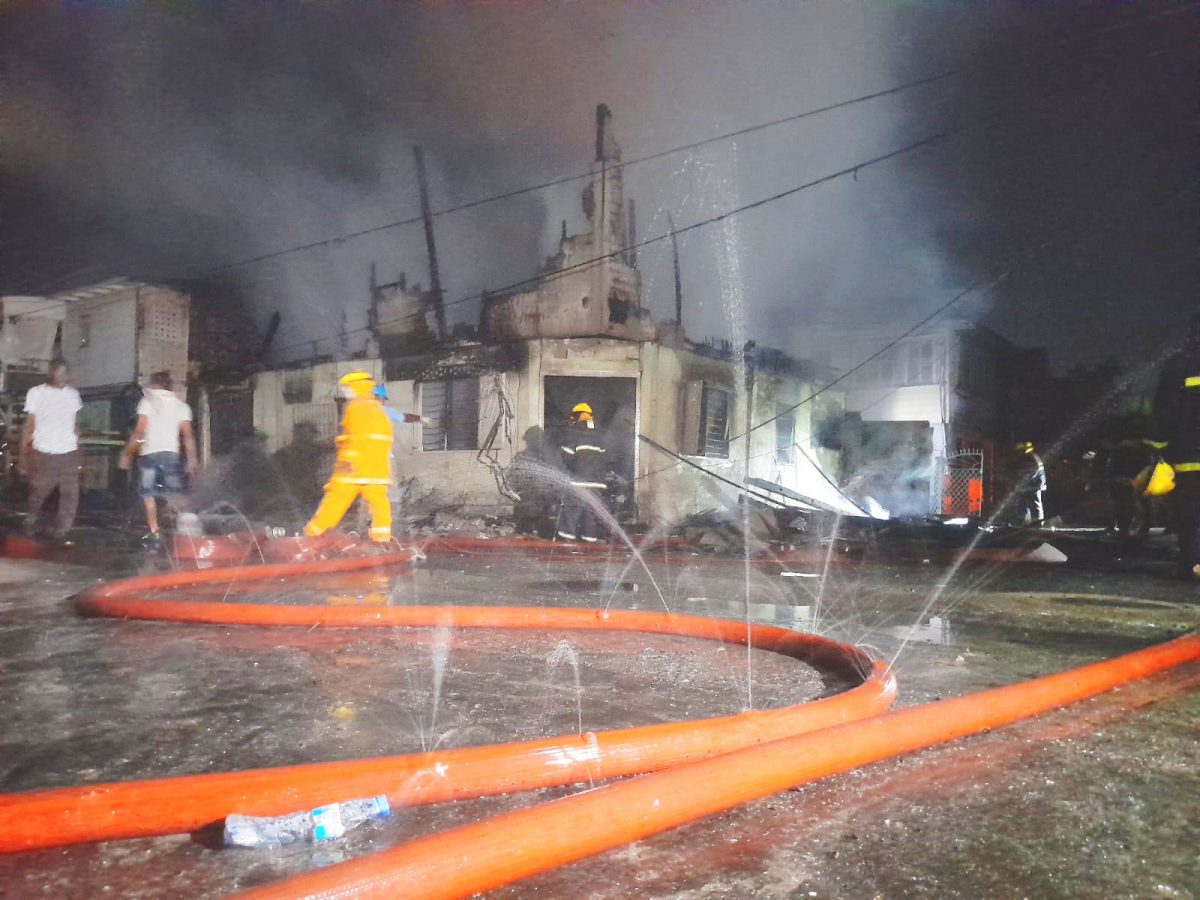As the Guyana Fire Service (GFS) faces criticism in relation to the quality of its hoses used to fight fires, its Chief Gregory Wickham explained that the hoses are regularly replenished, checked and are also damaged regularly when the fire service is in action.
The most recent firefight in Charlestown saw a badly punctured hose in operation raising questions as to how the fire service could not have known it was defective before setting off for the scene.
Wickham said that in the business of firefighting, there are protocols with the hoses used since it is one of the most important tools when fighting fires. As such, the hoses at each station are checked before usage and replaced.
When asked if the same damaged hoses are used at fire scenes, Wickham replied, “No, no, that is not the case, how would we know that these hoses are damaged and still take it out back? When these hoses are damaged there is a knot we put on it. That will indicate to anyone who would want to use a length of hose, that when they see this hose carrying a certain type of knot; it says that it is a damaged length of hose and so, it will not be used”, Wickham noted when asked if the same damaged hoses are used as fire scenes.
On numerous occasions, citizens have criticised the fire service for first, not having water, and second, when the water is flowing, some of that leaks from the hose.
“There is a concern, every leaking hose is a concern to firefighters. So, what we are doing we are replacing hoses, but some of these hoses get damaged during the firefighting; where appliances will drive over them and so because of the sudden shut off of the pressure, a mechanical system you call water hammer, where water under certain pressure forces itself back to the hydrant, and once there is no way of escape, the weakest part of that hose will burst. And, that is what we have on many of these occasions”, he said.
The Chief added also that even if these hoses are discovered in poor condition on the scene, they cannot be replaced at that moment.
“These are synthetic materials used to make these hoses. The hose can become poor by usage, dry rot and all those things. But if we roll it out and use it at a fire scene we won’t stop just because they have some holes. We will ensure that we do firefighting and when we finish that then we put a knot on that particular hose. You can’t check the hose all the time, the hoses are there but when we go out to firefighting if we notice a leakage, we will work as a system where we would use them to control fire and we put a knot on it after, and it’s later replaced”, he said.










